The Hyundai iMax loves a load.
In fact, it seems to ride smoother and handle better with eight people and luggage on board.
The eight-seater passenger version of the Hyundai iLoad commercial van also delivers enough torque from its 2.5-litre diesel engine to haul with ease.
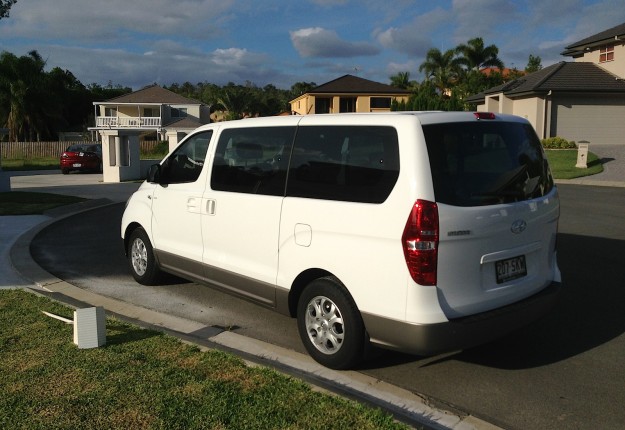
There are only a dozen or so genuine people movers on the showroom floor if you discount the seven-seater SUVs. Even less when you count the number of eight-seaters and fewer still if you want to carry eight people plus some luggage.
That basically leaves the vans – Volkswagen Multivan, Mercedes Viano, Valente and Vito. The rest are sort of fat wagons.
The sales leader in the people-mover segment is the Kia Grand Carnival with daylight second. The Hyundai iMax used to be number two, but it slipped a little in 2012 despite making its diesel engines more fuel efficient and adding a six-speed manual, as well as Bluetooth audio streaming and iPod connectivity via USB.
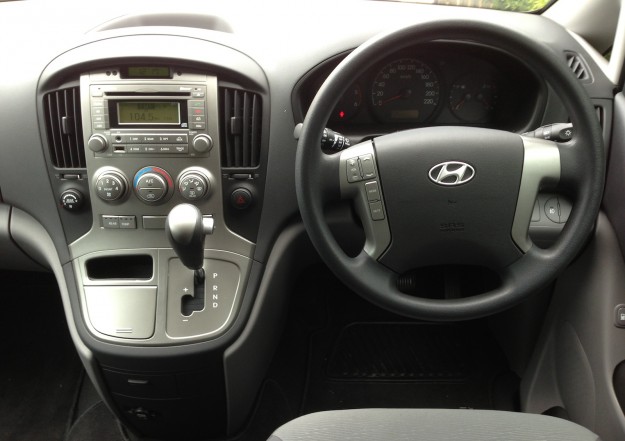
Of the van-style people movers, it's the most affordable starting at $37,290, compared with the Mercedes and Volkswagen, both from $49,990.
There are only three iMax variants – a 2.4-litre petrol model at $37,290 and manual and auto 2.5-litre diesels at $39,990 and $42,490, respectively. Metallic or mica paint is an extra $695. That's a lot of vehicle and people-and-luggage-moving efficiency for your money.
But vans are vans, right? They handle like a pie van and are difficult to manoeuvre in traffic and shopping centres, right?
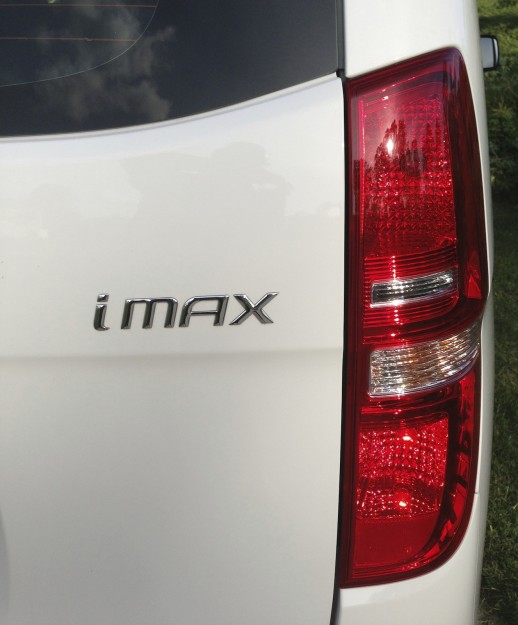
We drove the 5m-long Hyundai iMax diesel auto, which doesn't feel like a big van until you put it in reverse and try to park, especially under shopping centres (note it's about 1925mm high and most underground car parks are around 2m).
It could certainly do with a reversing camera, although it does have rear sensors. There's no need for front sensors as you can see the stubby nose from the driver's seat.
Despite the high driving position, it feels and handles more like a big car than a van. It's hardly nimble, yet the hydraulic steering is light for parking duties although unsurprisingly feel-less. The van's body pitches and rolls in corners but no more than some of the smaller people movers.
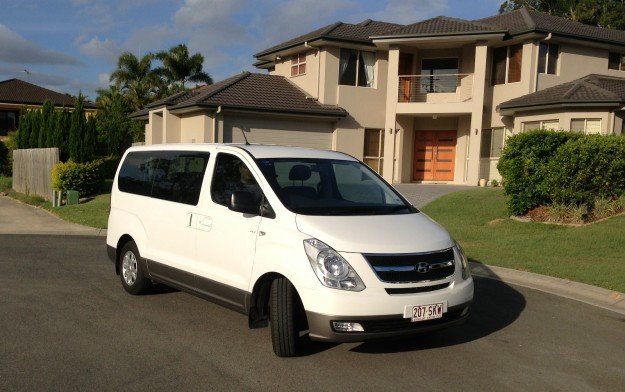
At the heart of the Hyundai iMax is the new 2.5-litre CRDi turbo diesel engine with more torque, better fuel consumption and lower emissions.
Power is still 125kW with the five-speed auto, but 100kW in the manual. More important than power for a vehicle that has to shift big loads is torque and here the manual married to the wastegate turbo diesel is up from 343Nm to 392Nm, with the peak coming on earlier in the revs for more grunt around town.
Usually a manual has more torque than the auto variant, but in this case the variable geometry turbo diesel auto has a stonking 441Nm between 2000-2500rpm.
Better still are the economy figures. The diesel manual iMax has improved five per cent from 8.5L/100km to 8.1, while the auto improves eight per cent from 9.8 to 9. For the greenies among you, it is also nice to know that corresponding CO2 emissions are down from 225g/km to 213 for the manual and down from 259g/km to 238 in the auto.
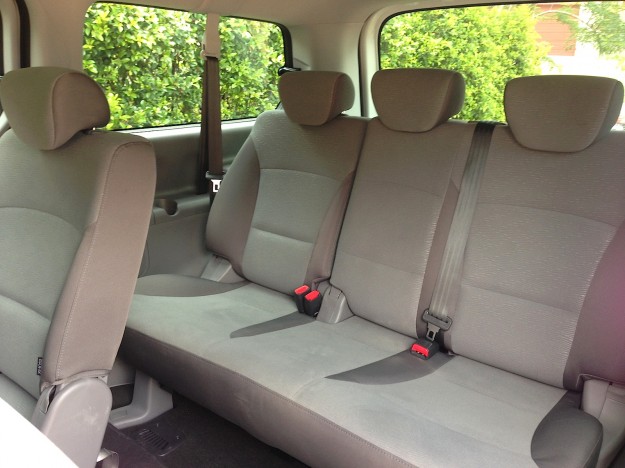
Despite the extra poke, towing capacities are unchanged at 750kg unbraked, 2000kg braked manual and 1500kg braked auto.
The Hyundai iMax is not the most powerful people-mover out there – that award goes to the Kia Grand Carnival with its 202kW/336Nm 3.5-litre V6.
But it isn't far behind. It is genuinely strong enough for the tasks at hand and will light up the front wheels with ease with a light load and a bit of turn. Put passengers and some luggage on board and it stops its wheel-spinning antics and behaves well with no torque steer.
We didn't drive the new manual, which, like all Hyundai transmissions, is designed and manufactured in-house. Hyundai says it uses multi-cone synchronisers for improved shift quality, and has a short stroke for quick and accurate shifts. The auto certainly changes smoothly and efficiently, although it's no lightning dual-clutch gearbox.
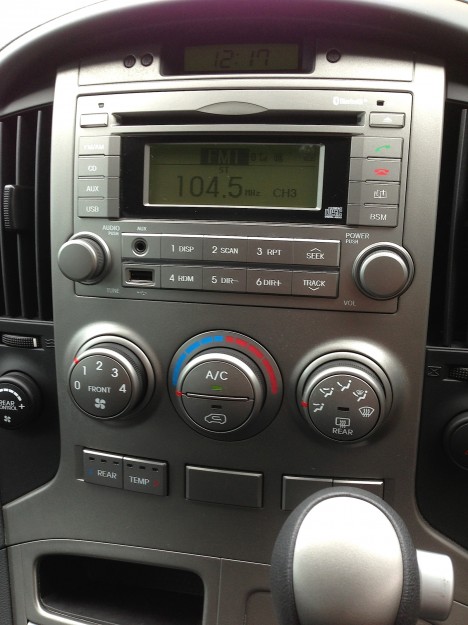
Inside, driver and front passenger are pampered by soft yet supportive perches with folding armrests. The other seats are equally comfortable: well contoured, with good lateral support. There are also two Isofix points for baby capsules in the second row.
To access the third row, you need to slide the second row forward and tilt the back rests forward. Once in this position, rear passengers have plenty of room to enter and exit.
The rear seating arrangement is not near as flexible as the Volkswagen, which has seats that rotate, tilt, slide and remove. These bench seats are permanent, only the second row slides and the rear row backs will only tilt forward, allowing big objects in the rear.
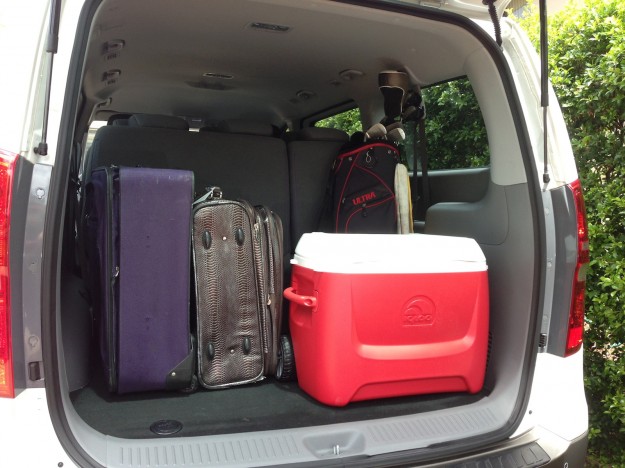
Dual sliding doors allow access from both sides of the vehicle. They are heavy and manually operated. Electronic doors would be better, but would add to the expense and weight of the vehicle.
They can be particularly difficult to close or open if the vehicle is on a slope. But don't get too vigorous when closing the door as you can easily jam your fingers.
The tailgate is also massive and heavy. It swings a long way back, so you have to stand back when opening it. Don't park too close to a wall or another car, or you won't be able to access the cargo area. Also, when it's open, short people will have difficulty reaching the hand recess to pull it back down. That could easily have been solved with a hand strap. Again, an automated function would have helped here.

The cargo area behind the third fixed row is cavernous at 1400mm wide, 850mm deep and 1200mm high, swallowing big and awkward-sized loads.
While the cabin area is dominated by hard grey plastic, it's the perfect hard-wearing combination for the rough and tumble of kids.
You can take half of your son's footy team with you and have no qualms about football boot tags leaving marks on the plastics. Your sweaty passengers will also be able to cool down with separate air conditioning controls in the rear and air vents for both the second and third rows.
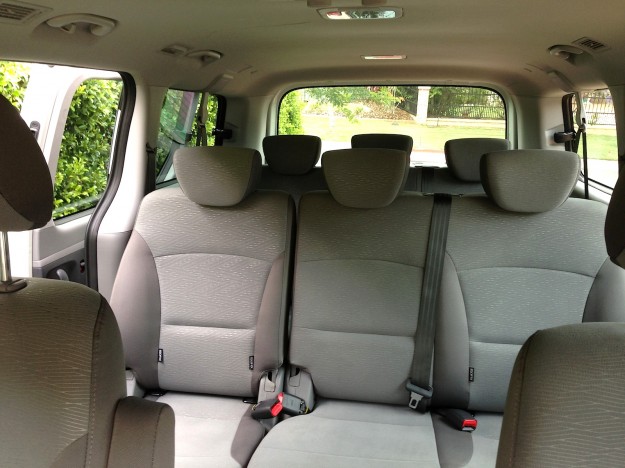
Most of the features you expect in today's passenger cars are available such as power windows and mirrors, plenty of storage compartments (including twin gloveboxes) and cup holders. You can also buy a portable cooler and DVD player as genuine Hyundai accessories, plus a towbar and roof racks for outside. We would have liked auto headlights and wipers included as standard, however.
The Hyundai iMax scores a four-star ANCAP safety rating and comes with an array of active and passive safety features such as ABS, electronic brakeforce distribution and electronic stability and traction controls.
There are, however, only two airbags for the driver and passenger. Curtain and side airbags for the second and third row would be welcome.
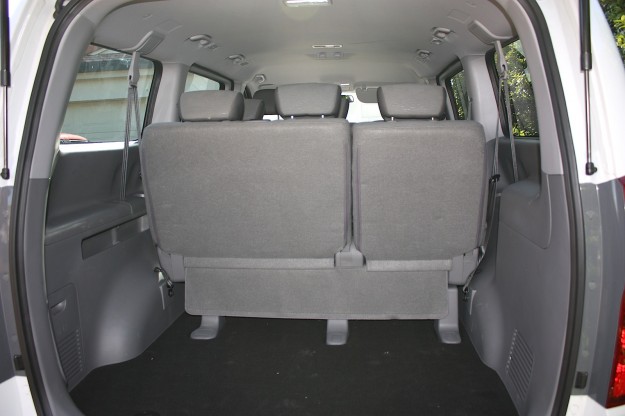
Thankfully, there is a full-size spare fitted. The 215/70 R16 spare is attached under the rear of the vehicle and you have to winch it down via a bolt on the inside of the cargo area.
If you absolutely need eight seats then the Hyundai iMax is almost the default choice for the money. But dropping a pew gives buyers a huge increase in style, sophistication and dynamics in the seven-seat Honda Odyssey.
Hyundai hasn't yet mastered that level of ability with its budget-priced van with seats.





